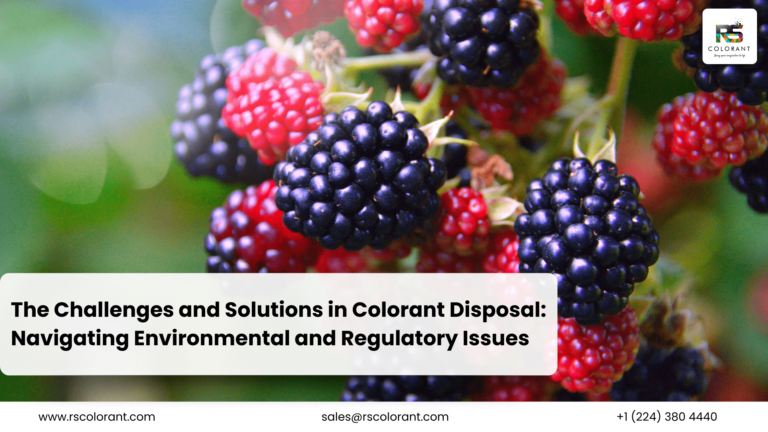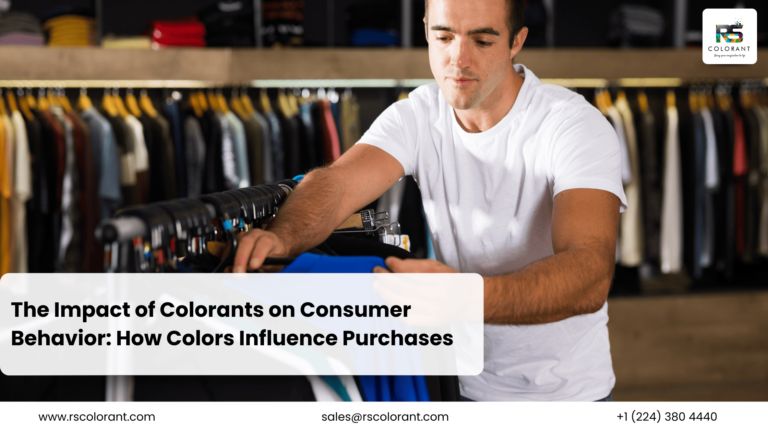Colorants on Product Branding – Introduction
Have you ever wondered why certain brands stick in your mind more than others? Often, it’s not just the catchy slogans or the memorable logos; it’s the colors that play a crucial role. Colorants are a fundamental aspect of product branding, influencing everything from consumer perception to purchasing decisions. In this article, we’ll explore the profound impact of colorants on product branding and how they can make or break a brand’s success.
The Science of Color Perception
How Colors Influence Human Psychology
Colors have a unique way of tapping into our emotions. They can evoke feelings of happiness, trust, excitement, or even urgency. This is because colors affect our psychological state, often without us even realizing it. For instance, red can increase heart rates, making us feel more energized and alert, while blue tends to have a calming effect.
The Role of Color in Decision-Making
Believe it or not, up to 90% of snap judgments made about products can be based on color alone. This underscores the importance of choosing the right colors for your brand. The right color can make your product stand out on the shelf, influence perceptions of quality, and even affect how customers perceive the taste of food and beverages.
Types of Colorants
Natural vs. Synthetic Colorants
When it comes to colorants, there are two primary types: natural and synthetic. Natural colorants are derived from plants, animals, or minerals, making them a popular choice for brands that emphasize organic and eco-friendly products. Synthetic colorants, on the other hand, are man-made and often offer a wider range of colors and greater stability.
Commonly Used Colorants in the Industry
Some commonly used natural colorants include beet juice (red), turmeric (yellow), and spirulina (blue-green). Synthetic options often include FD&C Red No. 40, FD&C Yellow No. 5, and FD&C Blue No. 1, which are widely used in food and beverage industries due to their vibrant hues and consistency.
Historical Context
Evolution of Color Usage in Branding
The use of color in branding is nothing new. Ancient Egyptians were among the first to use color for branding purposes, utilizing natural dyes to create distinctive products. Over the centuries, the practice has evolved, with companies increasingly recognizing the power of color to communicate their brand message.
Case Studies of Early Color Branding Successes
One of the earliest examples of successful color branding is Coca-Cola. The company’s distinctive red and white color scheme has become synonymous with its brand identity, helping it to stand out in a crowded market.
Color Psychology in Branding
Red: Passion and Urgency
Red is often associated with passion, excitement, and urgency. It’s no surprise that many fast-food chains use red to stimulate appetite and create a sense of urgency.
Blue: Trust and Calm
Blue is seen as trustworthy and dependable. Many financial institutions and tech companies use blue to convey reliability and stability.
Green: Health and Tranquility
Green is linked to health, nature, and tranquility. It’s a popular choice for brands that promote eco-friendly or health-conscious products.
Yellow: Optimism and Energy
Yellow evokes feelings of happiness and energy. It’s often used to grab attention and convey a sense of cheerfulness.
Other Colors and Their Psychological Impacts
Every color has its unique psychological impact. Purple is often associated with luxury and creativity, while black can convey sophistication and elegance.
Colorants and Consumer Behavior
Impact of Color on Buying Decisions
Color can significantly impact consumer behavior. Studies have shown that color can increase brand recognition by up to 80%, and it can directly influence purchasing decisions.
Color Preferences Among Different Demographics
Different demographics can have varying color preferences. For example, men are generally more attracted to bold colors like blue and black, while women often prefer softer shades like purple and pink.
Brand Identity and Color Consistency
Importance of Maintaining Color Consistency
Maintaining color consistency is crucial for brand identity. Consistent use of color helps to reinforce brand recognition and ensures that your products are easily identifiable.
Examples of Strong Brand Identities Through Color
Brands like McDonald’s, with its red and yellow color scheme, and Apple, with its sleek, minimalist design, have successfully used color to create strong brand identities.
Colorants in Packaging Design
How Packaging Colors Influence Consumer Perception
The colors used in packaging can influence how consumers perceive the product inside. Bright, vibrant colors can attract attention, while soft, muted tones can convey sophistication and elegance.
Successful Examples of Packaging Color Strategies
One successful example is Tiffany & Co.’s use of its signature robin’s-egg blue. This distinctive color has become synonymous with luxury and exclusivity.
Digital Branding and Colorants
Color Usage in Digital Marketing
In the digital age, color is just as important online as it is offline. Colors used in digital marketing campaigns can affect click-through rates, engagement, and overall brand perception.
The Role of Color in Websites and Social Media
Websites and social media platforms provide an excellent opportunity to use color strategically. A well-designed color scheme can enhance user experience and make your brand more memorable.
Challenges with Colorants in Branding
Regulatory and Safety Concerns
When it comes to colorants, there are regulatory and safety concerns to consider. Different countries have different regulations regarding the use of certain colorants, and it’s important to ensure that your products comply with these regulations.
Ethical Considerations
There are also ethical considerations, particularly with synthetic colorants. Some consumers prefer natural colorants due to concerns about the potential health risks associated with synthetic options.
Innovative Uses of Colorants
New Trends in Colorant Usage
Innovative uses of colorants are constantly emerging. From color-changing packaging to mood-enhancing color schemes, brands are finding new and exciting ways to use color to engage consumers.
Technological Advancements in Color Application
Technological advancements are also playing a role in how colorants are used. New printing technologies and digital color matching tools are making it easier than ever to achieve precise and consistent colors.
Case Studies of Successful Color Branding
Coca-Cola
Coca-Cola’s use of red is one of the most iconic examples of color branding. The vibrant red color is instantly recognizable and has become synonymous with the brand.
McDonald’s
McDonald’s use of red and yellow is another successful example. These colors not only grab attention but also stimulate appetite, making them perfect for a fast-food brand.
Apple
Apple’s sleek, minimalist use of color has helped to position it as a premium brand. The use of white and metallic tones conveys a sense of sophistication and modernity.
The Future of Colorants in Branding
Emerging Trends
As consumers become more conscious of the ingredients in their products, the demand for natural colorants is expected to rise. Brands will need to find new ways to incorporate these colorants while maintaining vibrancy and consistency.
Predictions for Future Branding Strategies
In the future, we can expect to see more personalized and interactive uses of color
in branding. Brands may use technology to create personalized color experiences for consumers, leveraging data to tailor color schemes to individual preferences and moods.
Conclusion
In the world of branding, colorants play an indispensable role. From influencing consumer psychology to shaping brand identity, the right use of color can set a brand apart in a crowded market. As we move forward, the challenge for brands will be to innovate and adapt to changing consumer preferences while maintaining the essence of their color identity. Whether through natural or synthetic colorants, the power of color in branding remains a timeless and critical element of successful marketing strategies.
FAQs
What are the most common colorants used in product branding?
Common colorants used in product branding include natural options like beet juice, turmeric, and spirulina, as well as synthetic options such as FD&C Red No. 40, FD&C Yellow No. 5, and FD&C Blue No. 1.
How do natural and synthetic colorants differ?
Natural colorants are derived from natural sources such as plants, animals, and minerals, while synthetic colorants are man-made. Natural colorants are often favored for their eco-friendly appeal, whereas synthetic colorants offer a wider range of vibrant colors and greater stability.
Why is color consistency important in branding?
Color consistency is vital in branding because it helps reinforce brand recognition and ensures that products are easily identifiable. Inconsistent use of color can dilute brand identity and confuse consumers.
How can colorants influence consumer behavior?
Colorants can influence consumer behavior by affecting their perceptions and emotions. For example, red can create a sense of urgency and stimulate appetite, while blue can evoke feelings of trust and calmness.
What are the future trends in colorant usage for branding?
Future trends in colorant usage for branding include a growing preference for natural colorants, personalized and interactive color experiences, and the use of advanced technologies for precise and consistent color application.




